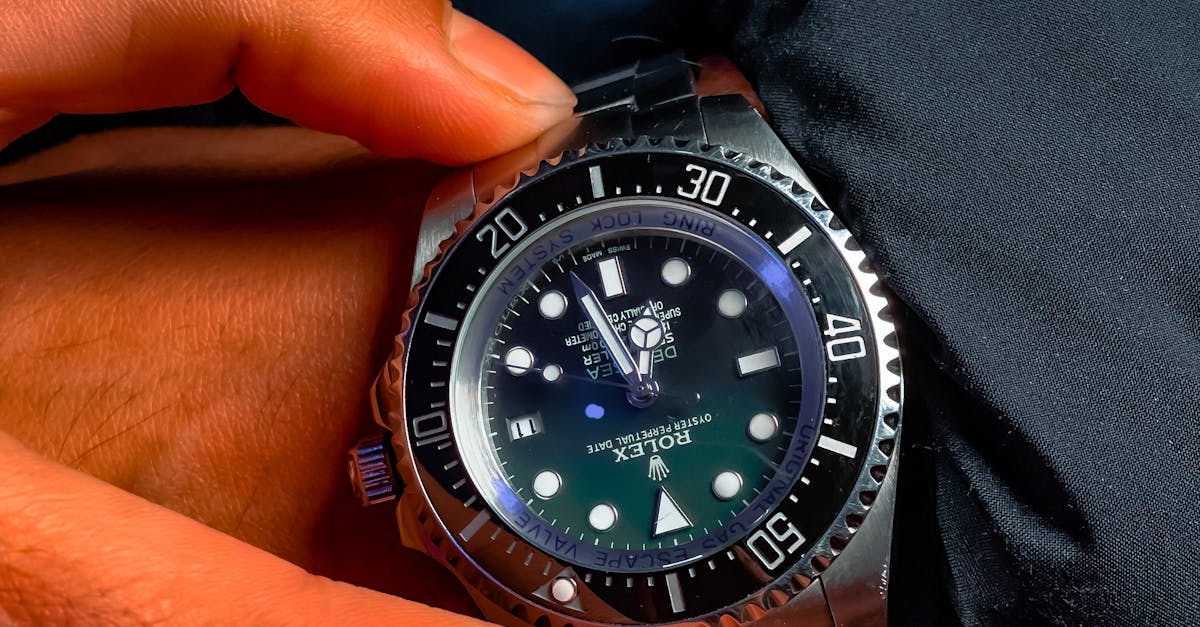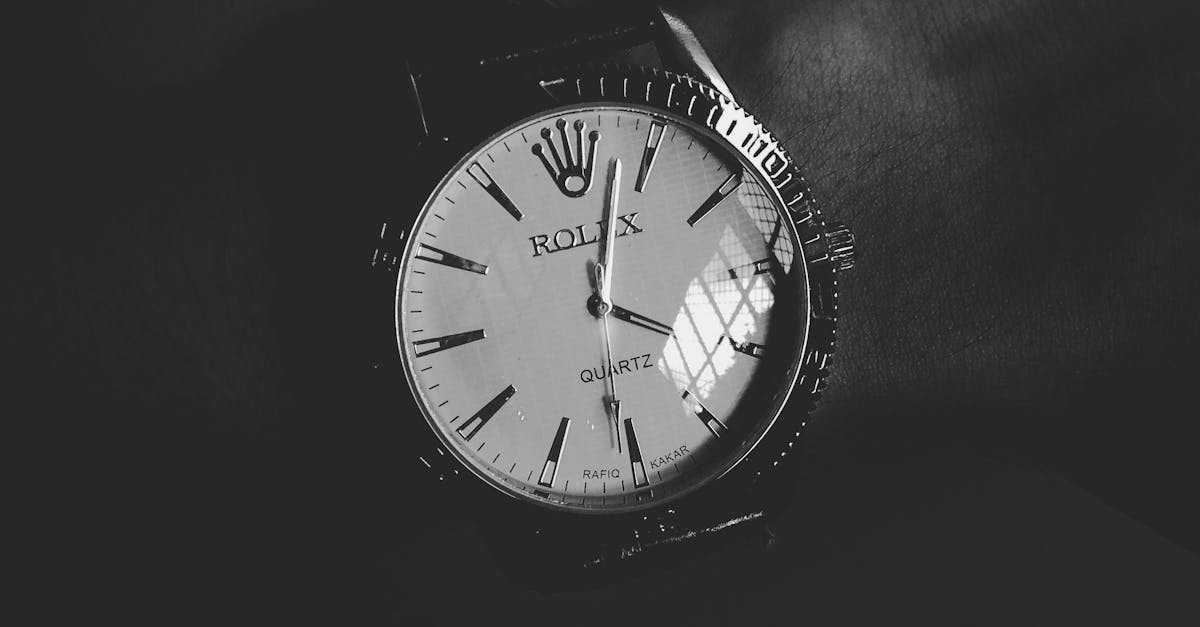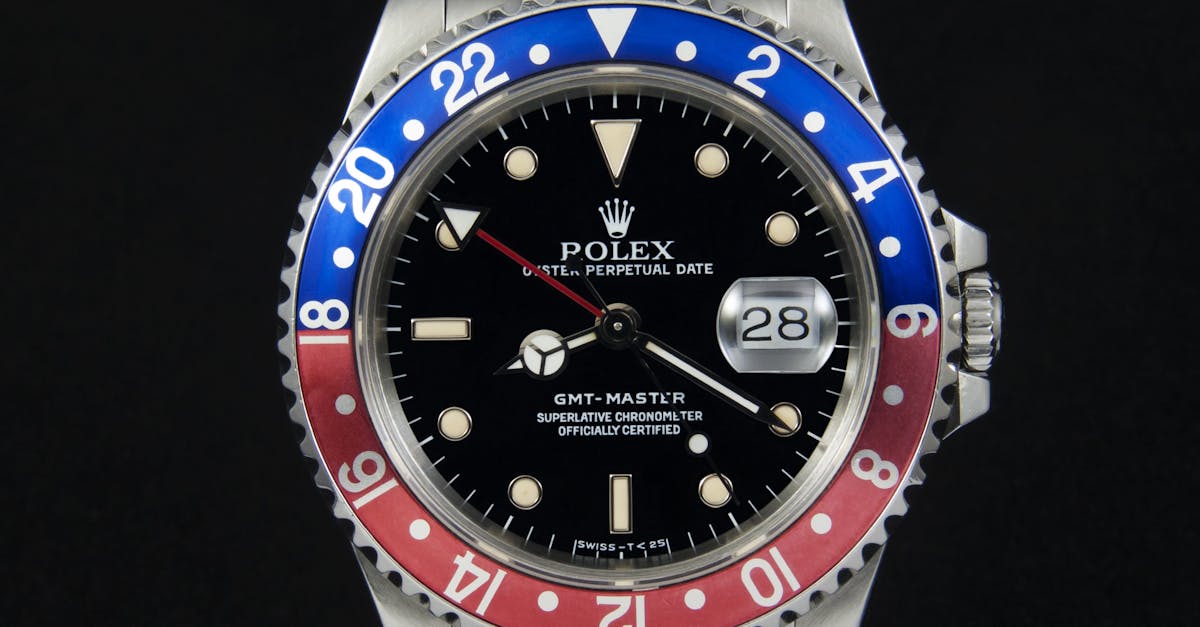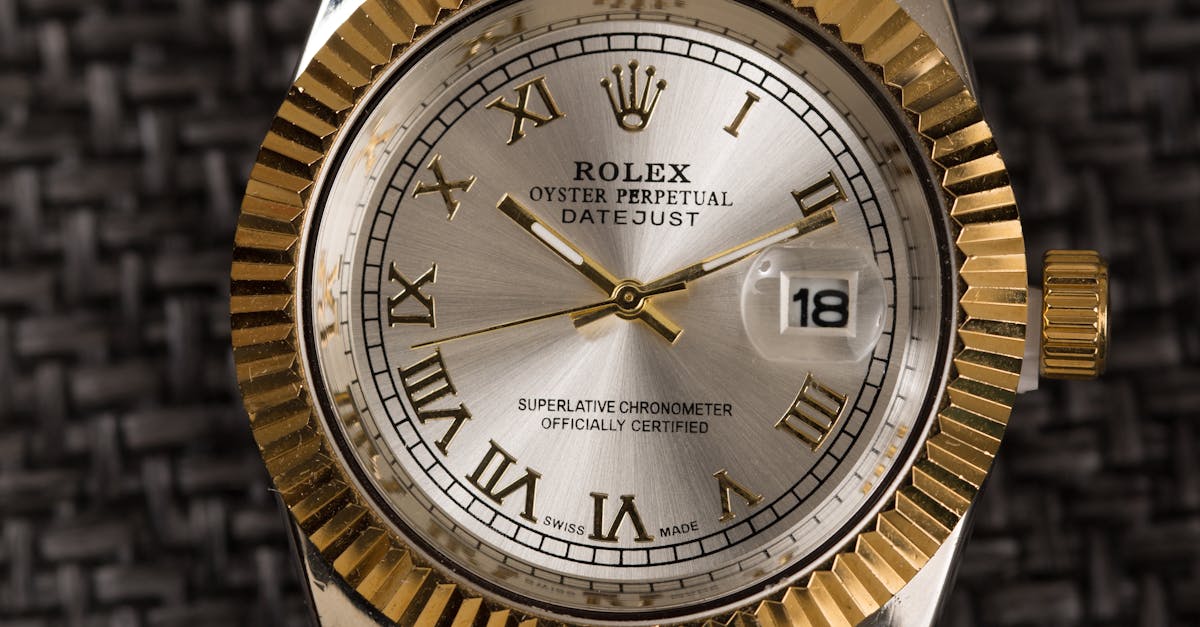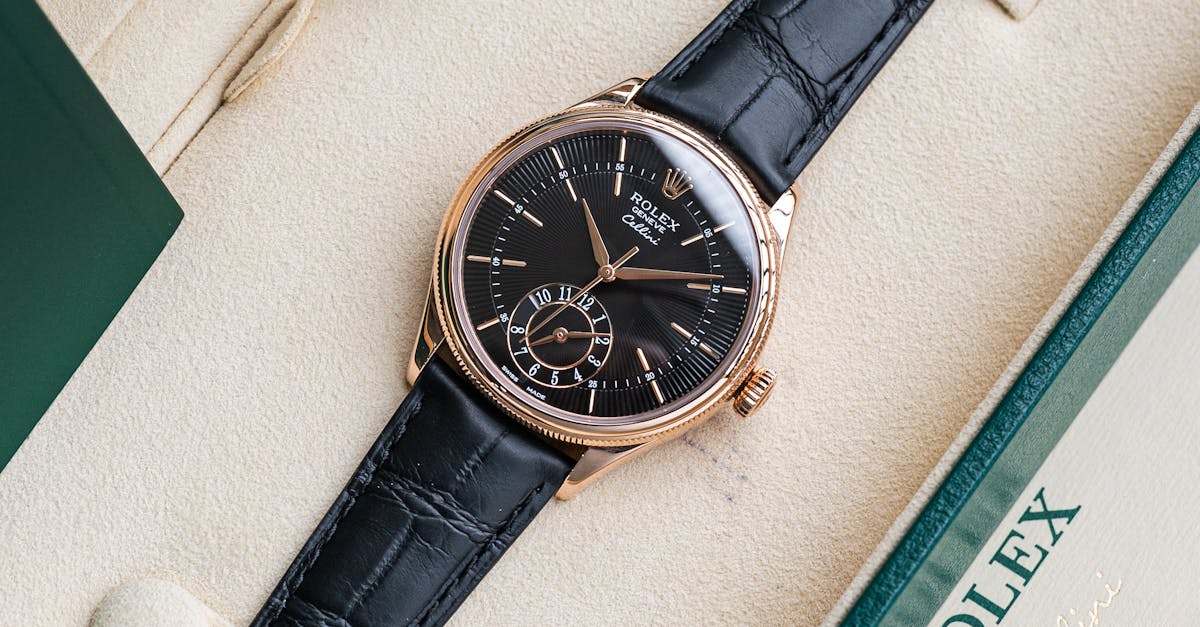Where Precision Meets Prestige: Exploring the Legacy of Rolex

Unveiling the Legacy and Craftsmanship of Rolex Watches: A Journey Into Timelessness
In the world of horology, few names evoke the same level of prestige and desirability as Rolex. For over a century, the Swiss watchmaker has captivated enthusiasts with its unwavering commitment to precision, innovation, and timeless design. Rolex watches are not merely timepieces; they are symbols of status, achievement, and the pursuit of excellence.
Embarking on a journey through the legacy of Rolex is like delving into a treasure trove of horological wonders. From the inception of the brand to its groundbreaking inventions, from its meticulous craftsmanship to its global impact, each chapter in Rolex’s history is a testament to the brand’s unwavering dedication to excellence. Join us as we unravel the intricate tapestry of Rolex’s legacy, exploring the factors that have solidified its position as a true icon in the world of watchmaking.
1. The Genesis of Rolex: A Legacy Steeped In Time
The Genesis of Rolex: A Legacy Steeped In Time
The story of Rolex begins in the late 19th century, in the watchmaking hub of Geneva, Switzerland. It was here that a young German watchmaker named Hans Wilsdorf crossed paths with his brother-in-law, Alfred Davis, and together they founded a company called Wilsdorf and Davis. The year was 1905, and little did they know that they were laying the foundation for what would become one of the most iconic and respected watch brands in the world.
In the early days, Wilsdorf and Davis focused on importing Swiss watch movements and assembling them into watches that were then sold to jewelers. However, Wilsdorf had bigger ambitions. He envisioned a watch that was not only precise and reliable, but also waterproof and elegant. At the time, these were considered to be mutually exclusive qualities. But Wilsdorf was determined to prove otherwise.
In 1908, Wilsdorf registered the trademark “Rolex,” a name he chose for its euphonic sound and ease of pronunciation in multiple languages. The following year, he moved the company to London, England, which at the time was the center of the global watch trade. It was in London that Rolex would truly come into its own.
2. Precision Engineering: The Heartbeat Of Rolex
Precision Engineering: The Heartbeat Of Rolex
At the heart of every Rolex watch lies a meticulously crafted movement, a symphony of precision engineering that ensures unparalleled accuracy and reliability. Rolex’s relentless pursuit of horological perfection is evident in every component, from the mainspring to the escapement, from the balance wheel to the hairspring. Each movement is assembled and regulated by hand by skilled watchmakers, ensuring that it meets Rolex’s exacting standards.
One of the most important innovations in Rolex’s history was the development of the Perpetual rotor, an ingenious self-winding mechanism that harnesses the natural motion of the wearer’s wrist to keep the watch wound. Introduced in 1931, the Perpetual rotor revolutionized the watch industry and is now considered an essential feature of any automatic watch. Rolex also played a pivotal role in the development of the chronometer, a watch that is certified to meet the highest standards of accuracy and precision. In 1914, Rolex became the first watchmaker to be awarded a Class A chronometer certificate by the Official Swiss Chronometer Testing Institute (COSC). Today, every Rolex watch is tested and certified by COSC, ensuring that it meets the exacting standards of the Swiss watch industry.
Rolex’s commitment to precision engineering extends beyond its movements. The brand’s cases are crafted from the finest materials, such as 904L stainless steel and 18k gold, and are designed to withstand the most extreme conditions. Rolex watches are also equipped with scratch-resistant sapphire crystals and are water-resistant to depths of up to 3,900 meters (12,800 feet). As a result, Rolex watches are not only beautiful timepieces, but also incredibly robust and reliable tools that can be worn and enjoyed in any environment.
3. Unveiling The Oyster: A Testament To Ingenuity
Unveiling The Oyster: A Testament To Ingenuity
In 1926, Rolex unveiled the Oyster, a groundbreaking watch that revolutionized the watchmaking landscape and set a new standard for water resistance. The Oyster was the brainchild of Rolex founder Hans Wilsdorf, who was determined to create a watch that could withstand the rigors of everyday life, including swimming and diving. To achieve this, Wilsdorf developed a system of gaskets and seals that prevented water from entering the watch case. He also fitted the Oyster with a screw-down crown, which further enhanced its water resistance.
The Oyster’s water resistance was put to the test in 1927, when Mercedes Gleitze, a British swimmer, wore an Oyster watch while attempting to swim across the English Channel. Gleitze successfully completed her swim, and her Oyster watch remained perfectly dry throughout the ordeal. The Oyster’s reputation for water resistance was further cemented in 1931, when Rolex diver Charles Bernand wore an Oyster watch while descending to a depth of 100 meters (328 feet) in Lake Geneva. The Oyster emerged from the dive unscathed, proving its ability to withstand even the most extreme conditions.
Today, the Oyster case is a cornerstone of Rolex’s watchmaking legacy. It is used in a wide range of Rolex models, from the iconic Submariner to the elegant Datejust. The Oyster case is a testament to Rolex’s commitment to innovation and quality, and it remains one of the most important and recognizable watch designs in the world.
4. Materials And Finishing: A Symphony Of Excellence
Materials And Finishing: A Symphony Of Excellence
Rolex watches are not only renowned for their precision engineering, but also for their exquisite materials and meticulous finishing. Rolex uses only the finest materials in the construction of its watches, including 904L stainless steel, 18k gold, and 950 platinum. These materials are renowned for their strength, durability, and resistance to corrosion.
Rolex’s commitment to quality extends to every aspect of its watches, including the finishing. Each Rolex watch is hand-finished by skilled craftsmen, who spend countless hours ensuring that every detail is perfect. The result is a watch that is not only beautiful, but also built to last a lifetime. Rolex’s attention to detail is evident in every aspect of its watches, from the polished surfaces to the intricate engravings. The brand’s signature “President” bracelet, for example, is made up of three solid links that are individually polished and then assembled by hand. The result is a bracelet that is both comfortable to wear and visually stunning.
Rolex’s commitment to quality and excellence is reflected in the fact that its watches retain their value over time. A Rolex watch is not just a timepiece; it is an investment that can be passed down from generation to generation.
5. Rolex And The World Stage: A Storied Connection
Rolex And The World Stage: A Storied Connection
Rolex has a long and storied history of partnering with influential figures, adventurers, and organizations around the world. These partnerships have helped to solidify Rolex’s reputation as a global brand and have also played a role in shaping the history of exploration and scientific discovery.
One of Rolex’s most famous partnerships is with Sir Edmund Hillary, the first person to summit Mount Everest. Hillary wore a Rolex Oyster Perpetual during his historic ascent in 1953, and the watch performed flawlessly in the harsh conditions of the Himalayas. Rolex has also partnered with other著名登山家, such as Reinhold Messner and Chris Bonington, and has supported numerous expeditions to the world’s highest peaks.
In addition to its partnerships with登山家, Rolex has also worked with explorers, scientists, and artists from a wide range of fields. Rolex watches have been worn by Jacques Piccard during his record-breaking dive to the bottom of the Mariana Trench, by Neil Armstrong during the first moon landing, and by James Cameron during his solo dive to the bottom of the Challenger Deep. Rolex has also supported numerous scientific expeditions, including the Transglobe Expedition, which was the first to circumnavigate the globe on land and sea.
6. The Rolex Legacy: Enduring Allure And Timeless Value
The Rolex Legacy: Enduring Allure And Timeless Value
Rolex watches have a timeless appeal that transcends generations. They are not only beautiful and well-made, but they are also incredibly durable and reliable. Rolex watches are often passed down from generation to generation, and they hold their value remarkably well over time. This makes them a sound investment, as well as a cherished family heirloom.
There are a number of factors that contribute to the enduring appeal of Rolex watches. First and foremost is the brand’s reputation for quality and craftsmanship. Rolex watches are made to the highest standards, using only the finest materials. Each watch is hand-assembled and tested to ensure that it meets Rolex’s exacting standards. As a result, Rolex watches are known for their precision, durability, and water resistance.
Another factor that contributes to the appeal of Rolex watches is their timeless design. Rolex watches are not trendy or flashy. Instead, they have a classic, understated look that never goes out of style. This makes them a versatile choice that can be worn in any setting.
Quiz
Multiple Choice
-
Who founded Rolex?
a) Hans Wilsdorf and Alfred Davis
b) Jacques Piccard and Edmund Hillary
c) James Cameron and Neil Armstrong
d) Reinhold Messner and Chris Bonington
-
What was the name of the groundbreaking waterproof watch that Rolex introduced in 1926?
a) The Explorer
b) The Submariner
c) The Oyster
d) The Datejust
-
Which famous swimmer wore a Rolex Oyster watch while attempting to swim across the English Channel in 1927?
a) Gertrude Ederle
b) Annette Kellerman
c) Mercedes Gleitze
d) Florence Chadwick
True/False
-
Rolex watches are made using only the finest materials, such as 904L stainless steel and 18k gold.
-
Rolex watches are not particularly water-resistant.
-
Rolex has a long history of partnering with influential figures, adventurers, and organizations.
Answer Key
Multiple Choice
- a) Hans Wilsdorf and Alfred Davis
- c) The Oyster
- c) Mercedes Gleitze
True/False
- True
- False
- True
Answer Key
Multiple Choice
- a) Hans Wilsdorf and Alfred Davis
- c) The Oyster
- c) Mercedes Gleitze
True/False
- True
- False
- True
